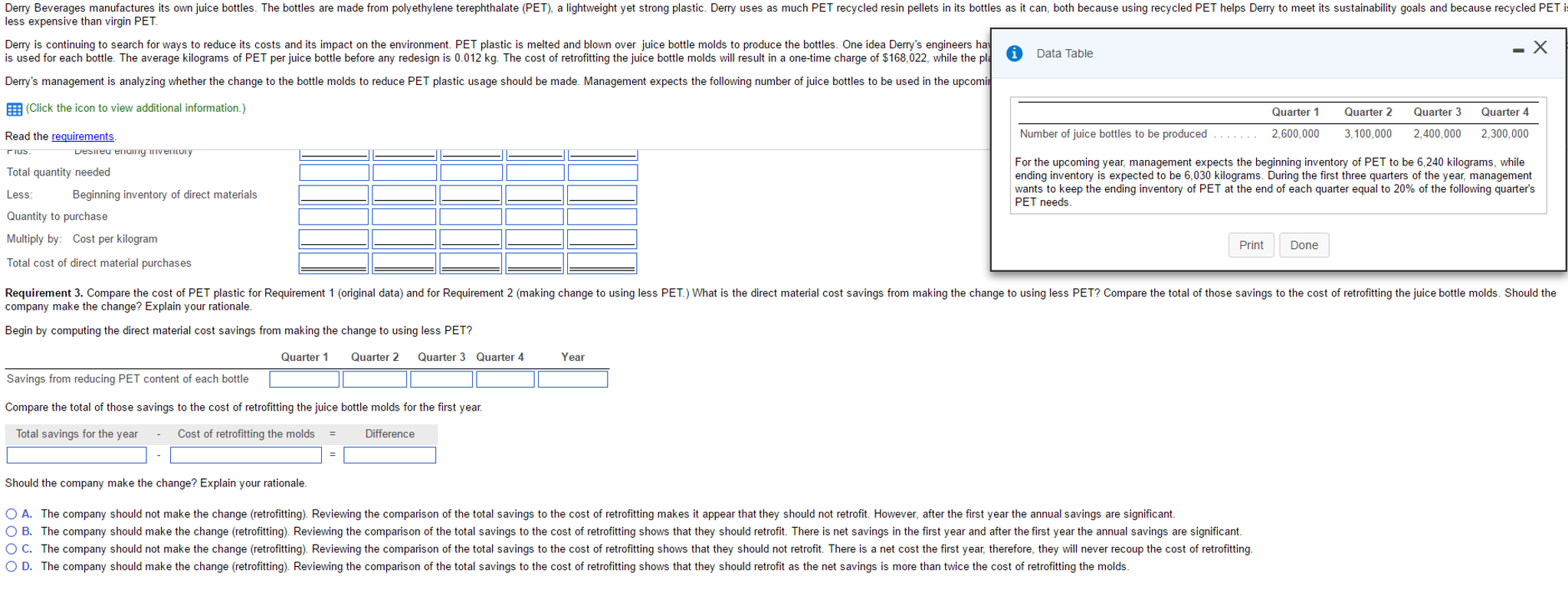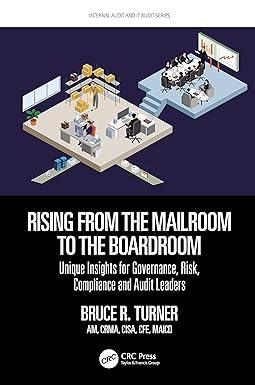Can someone help me with this question?
Requirement 1

Requirement2

Requirement3

Derry Beverages manufactures its own juice bottles. The bottles are made from polyethylene terephthalate (PET), a lightweight yet strong plastic. Derry uses as much PET recycled resin pellets in its bottles as it can, both because using recycled PET helps Derry to meet its sustainability goals and because recycled PET is less expensive than virgin PET Demy s continuing o search or ways o reduce its costs and its impact on he environment PET plastic s melted and blown over ulce bottle molds o produce he bottles. One idea emy's engineers have suggested is o retrofi hejuice bottle molds and change he plastic ormulation slightly so hat 25% ess PET plastic is used for each bottle. The average kilograms of PET per juice bottle before any redesign is 0.012 kg. The cost of retrofitting the juice bottle molds will result in a one-time charge of $168,022, while the plastic reformulation will cause the average cost per kilogram of PET plastic to change from $6.00 to $6.20 Derry's management is analyzing whether the change to the bottle molds to reduce PET plastic usage should be made. Management expects the following number of juice bottles to be used in the upcoming year: (Click the icon to view additional information.) Read the requirements Requirement 1. Using the original data (before any redesign of juice bottles), prepare a direct materials budget to calculate the cost of PET purchases in each quarter for the upcoming year and for the year in total Start by preparing the direct materials budget through the total quantity needed, then complete the budget Derry Beverages Direct Materials Budget For quarters 1 through 4 Data Table Quarter 1 Quarter 2 Quarter 3 Quarter 4 Year Quarter 1 Quarter 2 Quarter 3 Quarter 4 Units to be produced Multiply by: Quantity of direct materials needed per unit Quantity of PET needed for production Plus Total quantity needed Number of juice bottles to be produced 2,600,000 3,100,000 2,400,000 2,300,000 ply by: Quantity of direct materials needed per unit For the upcoming year, management expects the beginning inventory of PET to be 6,240 kilograms, while ending inventory is expected to be 6,030 kilograms. During the first three quarters of the year, management wants to keep the ending inventory of PET at the end of each quarter equal to 20% of the following quarters PET needs Desired ending inventory Beginning inventory of direct materials Print Done Quantity to purchase Multiply by: Cost per kilogram Total cost of direct material purchases









